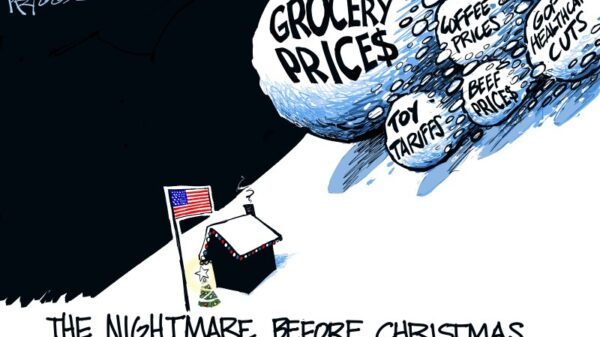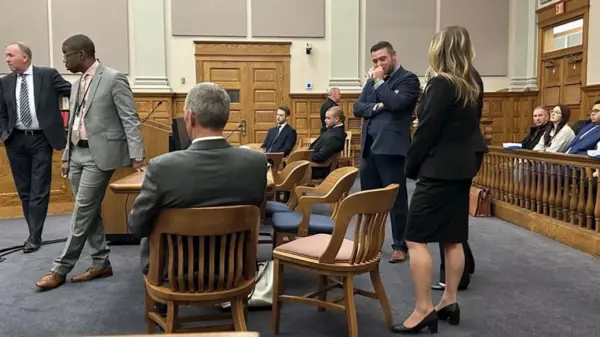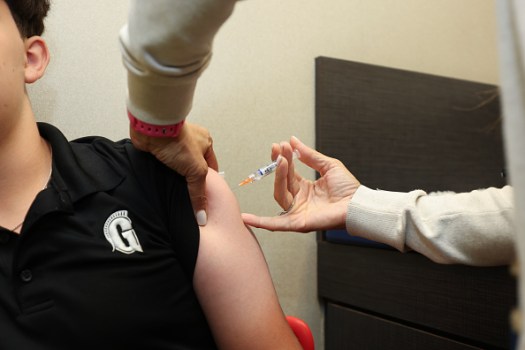As the federal shutdown persists, states find themselves relying heavily on their own resources to track disease outbreaks, coinciding with the onset of the respiratory illness season. This disruption has curtailed essential services provided by the federal Centers for Disease Control and Prevention (CDC), which typically monitors key health indicators, including wastewater analysis, to offer early warnings about the spread of COVID-19, influenza, and respiratory syncytial virus (RSV).
The lack of federal oversight complicates states’ ability to gauge the health of their populations during a critical period. State and local officials typically leverage data from the CDC for guidance on vaccination strategies and public health messaging. Without these resources, the risk of unrecognized disease outbreaks increases, which could ultimately threaten lives, particularly as vaccination rates decline due to misinformation and increased exemptions.
Dr. John T. Brooks, a former chief medical officer for the CDC’s Emergency COVID-19 Response, emphasized the importance of wastewater surveillance for early detection of outbreaks. He stated, “This is one more piece of information to each American citizen to inform their decision, like, ‘Do I want to get vaccinated, and is now the time?’” Without timely data, communities may lack the necessary information to implement effective public health measures.
State Responses to Data Gaps
The shutdown has prompted a range of responses from states grappling with the absence of CDC data. For instance, Georgia has paused its routine influenza report due to the unavailability of CDC information but is working on an alternative using only state-collected data. Nancy Nydam, a spokesperson for the Georgia Department of Public Health, noted that while there are some gaps, the state has its own data on emergency room visits that indicate a decline in suspected cases of COVID-19, flu, and RSV.
In a comprehensive review of the impact of the shutdown across all 50 states, Caitlin Rivers, an associate professor at Johns Hopkins University, highlighted what she termed “DIY surveillance.” This term reflects the necessity for states to adopt self-sufficient data collection methods in the absence of federal support.
Some states, like Texas, have managed to maintain their data collection efforts during the shutdown. Texas health department spokesperson Chris Van Deusen confirmed that the state continues to conduct its own surveillance for various metrics, although it no longer receives updates on new COVID-19 and RSV deaths from the federal government. Similarly, North Carolina maintains its wastewater data with assistance from local health departments and the University of North Carolina.
Long-Term Implications and Expert Concerns
The long-term implications of this data gap are concerning for public health experts. Ericka McGowan, senior director for emerging infectious disease at the Association of State and Territorial Health Officials, warned that the absence of CDC involvement could pose significant risks if states overlook critical public health issues. Many localities depend on CDC analysis for actionable insights, and without this expertise, their capacity to respond to outbreaks effectively is compromised.
Experts are also raising alarms about rising emergency room visits among young children, who are particularly vulnerable to RSV, in states such as Louisiana, South Carolina, Texas, and Virginia. The increased hospitalizations signal a potential surge in respiratory illnesses that could strain local health systems, especially if data collection remains hindered.
Michael Hoerger, an associate professor at Tulane University, expressed his frustration over the shutdown’s impact on real-time data access. He noted that his state-by-state wastewater reports on COVID-19 have been suspended due to the lack of CDC data. “We’re in a bit of a blackout at the moment in terms of real-time rigorous data,” he commented.
As the respiratory illness season progresses, the urgency for accurate health data becomes even more critical. States are encouraged to develop robust systems for monitoring and responding to health threats independently, but the absence of federal support presents challenges that may hinder effective public health responses.
While some states have successfully navigated the shutdown by enhancing their surveillance capabilities, there remains a pressing need for coordinated efforts and reliable data sources to ensure the health and safety of communities nationwide.






































































